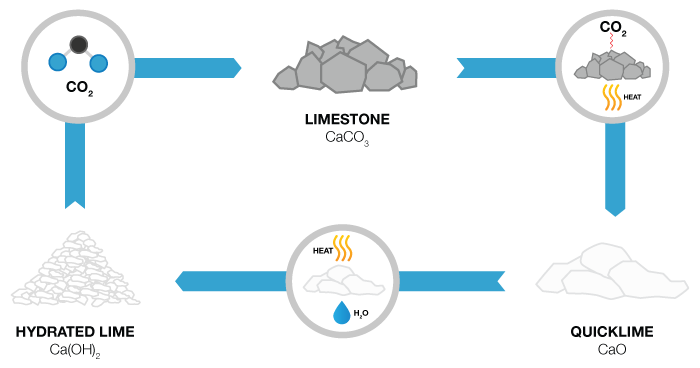Our world depends on lime
Among the oldest and most vital materials used by humans, lime and limestone products are more in demand today than ever before in history.
Nowadays, lime is used :
- In our homes for copper, dry bleaches, dyes, glass, gold, lawn and garden neutralizers, leather, masonry, mortar, paint, paper, pharmaceuticals, plaster and stucco, sugar, table salt, toothpaste and tortilla flour.
- In our communities for agricultural liming, apple storage, asphalt, sewage treatment and water treatment.
- For the preservation of our environment in mine tailing drainage treatment, air pollutant abatement, epidemic diseases control, remediation, waste water treatment.
- In industries for alumina, barium, glass, lead, lithium, magnesium, nickel, petroleum refining, silver, sodium alkali, solar-grade silica, steel, uranium, wood pulp, zinc.
Discover the uses of lime through our Markets pages, or see the list of our Products.
Definition
The word "lime" refers to products derived from burnt (calcined) limestone, such as quicklime and hydrated lime. Limestone is a naturally occurring and abundant sedimentary rock consisting of high levels of calcium and/or magnesium carbonate, and/or dolomite (calcium and magnesium carbonate), along with small amounts of other minerals. It is extracted from quarries and underground mines all over the world.
The lime cycle
After processing, products derived from limestone have the unique ability to return to their original chemical form. The lime cycle consists of first burning of limestone to form quicklime. Hydrated lime can then be produced by adding water to the quicklime. At this point, carbon dioxide in the atmosphere or from industrial processes react with hydrated lime to convert it back to limestone. This cycle is called the lime cycle. The time it takes for quicklime or hydrated lime to be converted back to limestone can span from less than an hour with the aid of certain industrial processes to several years if left at atmospheric conditions.

